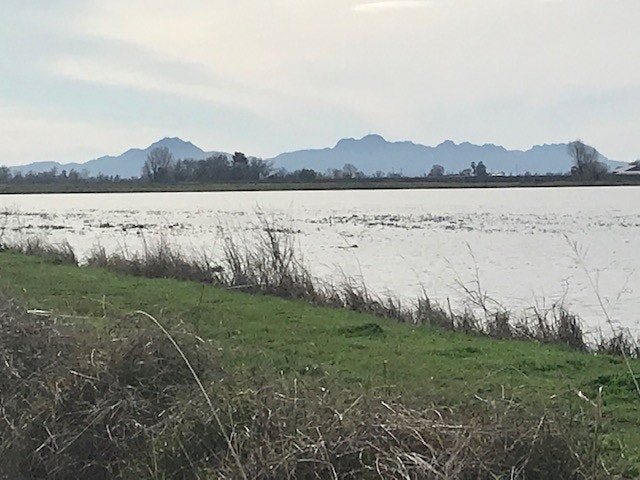Beating the Lag: How Stockton East Took Charge of the Water Year

For water managers in California, the gap between real-time conditions and the metrics that dictate operations can be a source of real frustration. Just ask Justin Hopkins, General Manager at Stockton East Water District (SEWD).
Earlier this year, as New Melones Reservoir approached capacity and potential flood releases, the San Joaquin River Index (SJRI)- a metric used to classify water year type and determine Central Valley Project (CVP) allocations- still labeled the year as “dry.”

“It just didn’t reflect what was actually happening,” Hopkins said. “That’s incredibly frustrating.”
But instead of waiting for the indices to catch up, Stockton East leveraged long-range forecast tools from Weather Tools.
Long-Lead Forecasts, Real-Time Decisions
Working with Weather Tools, the district utilized both the California Annual Precipitation (CAP) forecast and the California Reservoir Annual Forecast Tool (CRAFT) to shape their water year strategy. While each tool has a different focus, together they provided a powerful decision-making edge and Stockton East put to use: CAP for New Melones, and CRAFT for New Hogan.
CAP delivers a statewide precipitation forecast each November, estimating water year outcomes in 20% ranges relative to normal. Heading into the 2024 water year, the CAP forecast indicated “normal” precipitation (90-110% of normal), providing the early intel that helped Stockton East begin planning CVP operations months before the official allocation process kicked in.
“The earlier we can begin using that CVP water, the more of it we can use,” Hopkins explained. “We don’t have carryover storage in New Melones, so if we delay, we miss out. Using CAP gave us the confidence to act.”
Meanwhile, CRAFT provided a separate but equally valuable advantage: inflow forecasts for individual reservoirs, issued months ahead of official state projections. For New Hogan Reservoir, where SEWD has operational control below flood pool, the tool was the basis for a bold new strategy.
“It almost feels like we’re cheating the system, because we know the future,” Hopkins said. “It takes a pretty high level of buy-in, but when you look at Weather Tools’ track record, we’re confident.”
A Custom, Crude FIRO
Forecast-Informed Reservoir Operations (FIRO) is an emerging water management concept that uses forecast data to inform real-time decisions. While formal FIRO pilots are limited to a handful of sites in California, Stockton East decided to implement their own.
With CRAFT forecasting near-average inflow for New Hogan, Hopkins and his team released water early for recharge while they still had operational control, confident that additional inflow was on the way.
“We fully used our supplies for irrigation, municipal demand, and recharge,” Hopkins said. “To be at nearly the same storage level as last year with less rain? That’s a success. That’s operational efficiency.”
Turning Forecasts into Strategy
Forecasts alone don’t change outcomes. It’s how they’re used that makes the difference. With the right tools and the confidence to wield them, Stockton East proves that smart water management doesn’t have to wait.
“We’re not just reacting anymore,” Hopkins said. “We’re planning with clarity.”
By beating the lag and betting on a forecast with a strong track record, Stockton East made the most of every drop and showed what’s possible when long-range forecasting becomes the foundation of water management.
